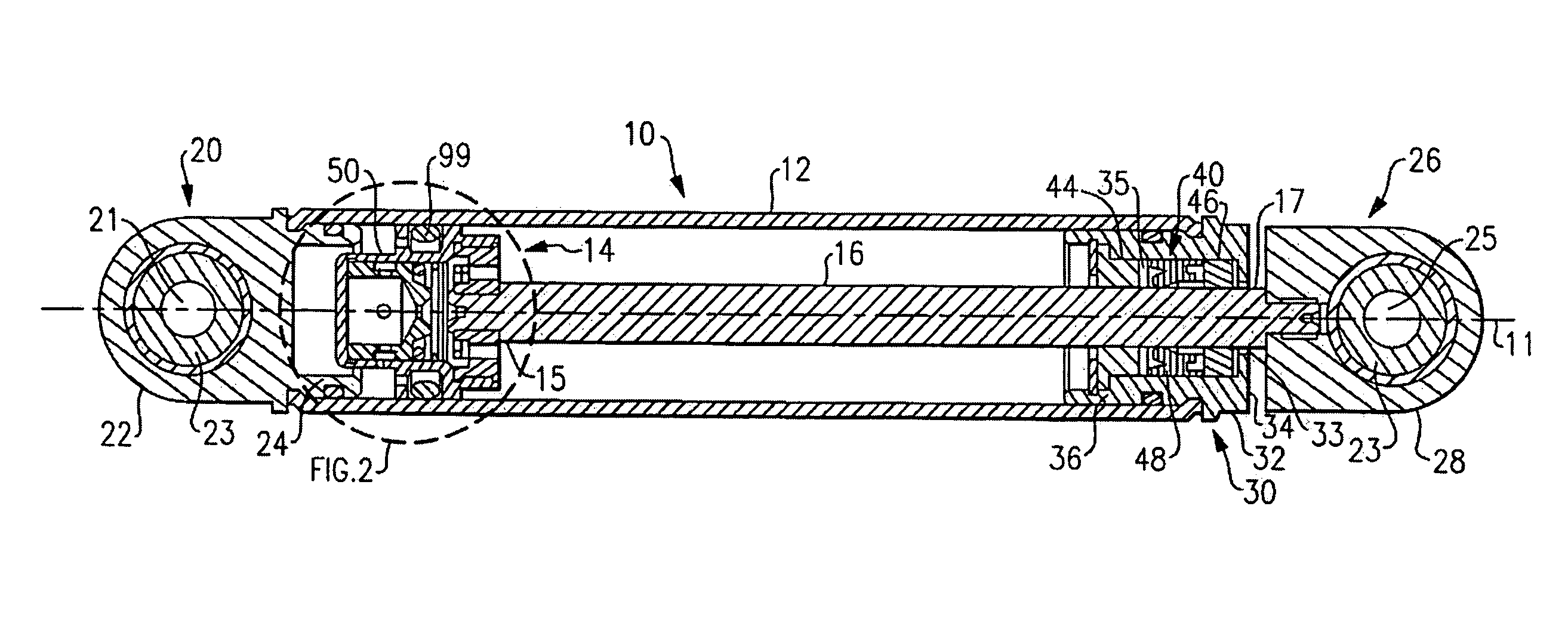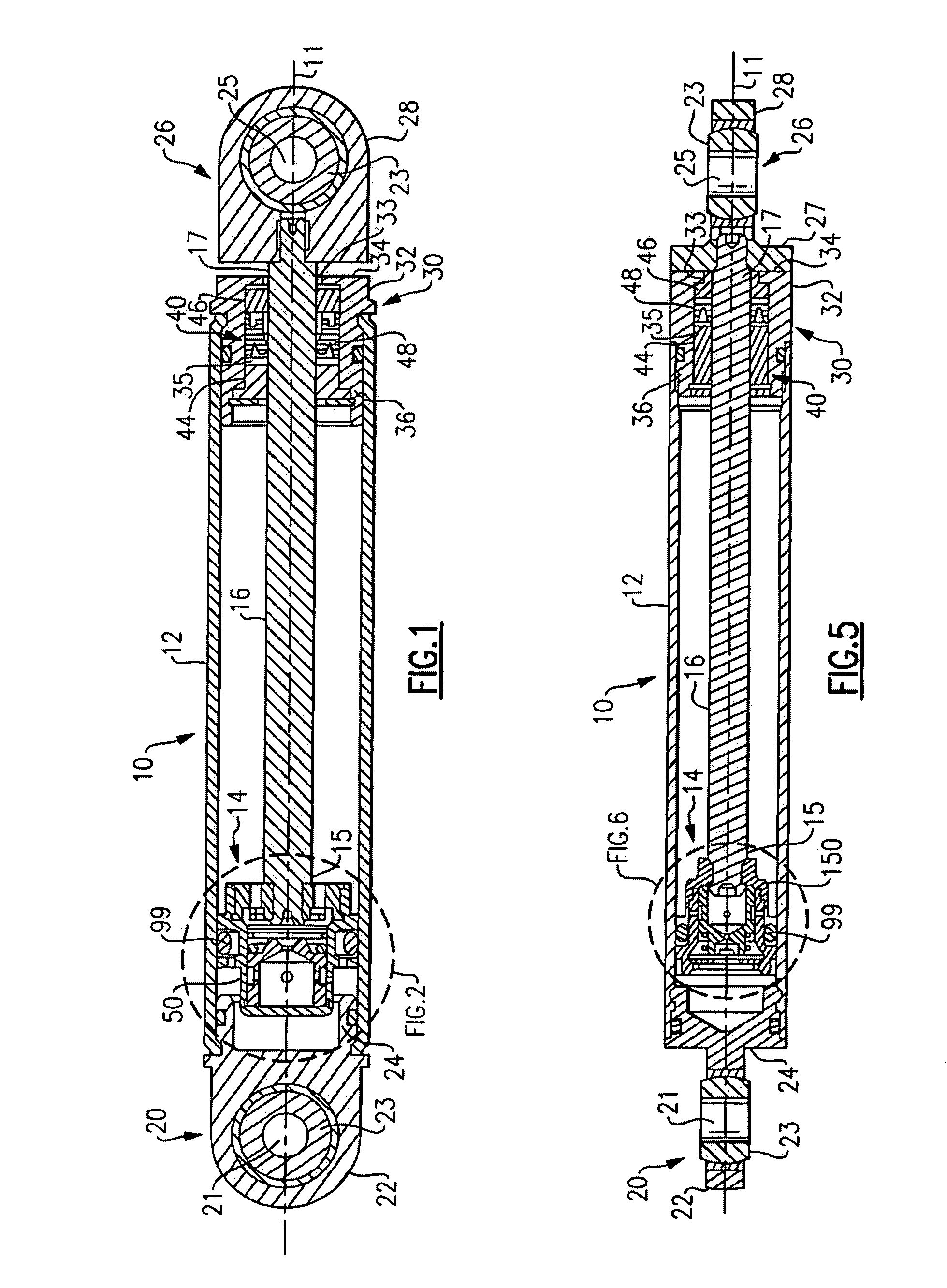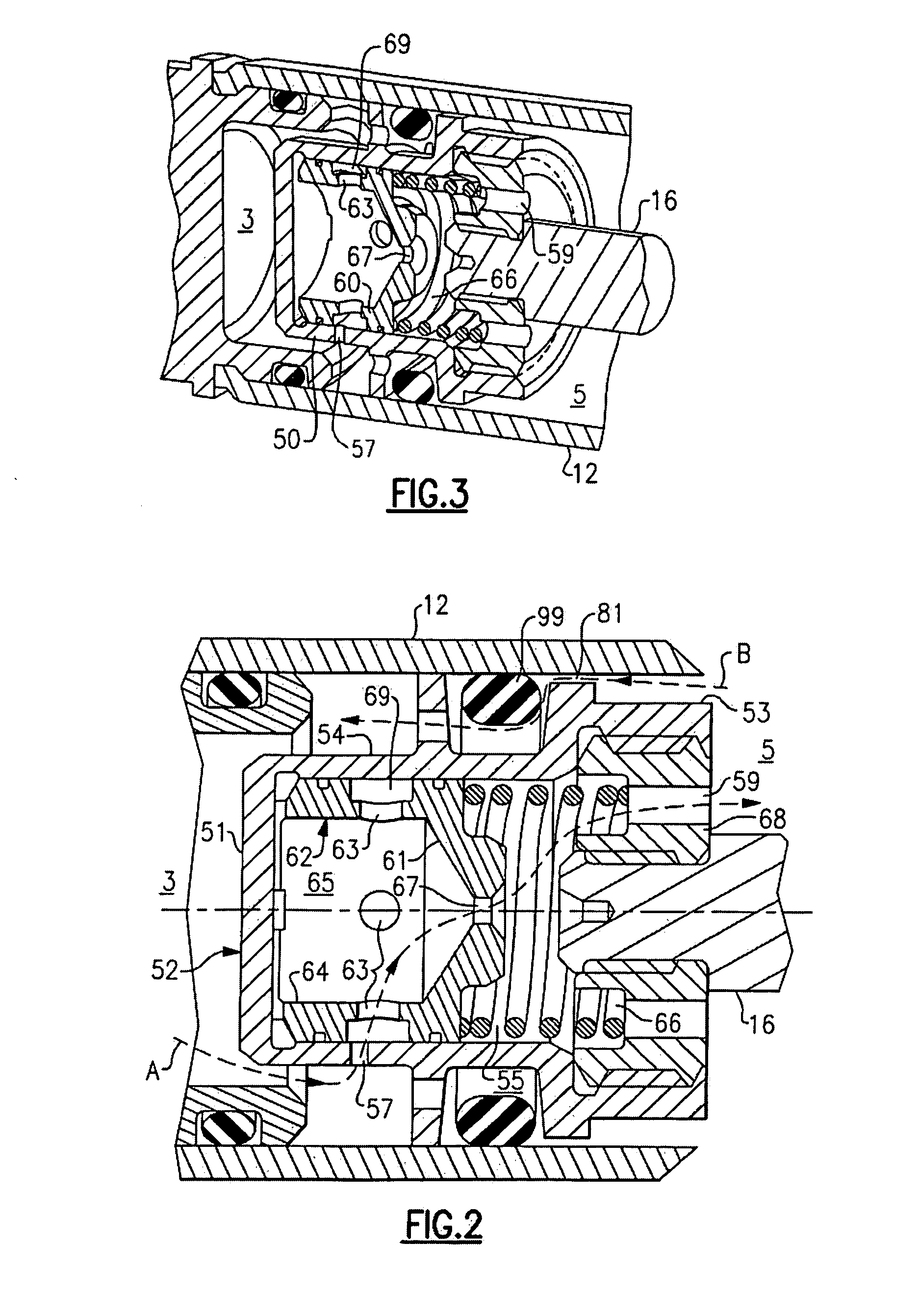Load compensating hydraulic rate control
a hydraulic rate control and load compensation technology, applied in the field of rate controls, can solve the problems of increasing the size and weight of the rate control device, and the inability to control the fluid flow rate through the valve to a near constant rate over a wide range of applied loads
- Summary
- Abstract
- Description
- Claims
- Application Information
AI Technical Summary
Benefits of technology
Problems solved by technology
Method used
Image
Examples
Embodiment Construction
[0026]Referring initially to FIGS. 1 and 5 of the drawing, there are depicted exemplary embodiments of a hydraulic rate control device 10 in accordance with the present invention. The rate control device 10 includes a cylindrical tube 12 extending along a longitudinal axis 11 and a piston assembly 14 that includes a piston rod 16 having a proximal end 15 and a distal end 17, and a piston head assembly 50, 150 mounted to the proximal end 15 of the piston rod 16 and housed within the interior of the cylindrical tube 12. The cylindrical tube 12 has a first cylinder end assembly 20 mounted to a first end of the cylindrical tube 12 and a second cylinder end assembly 30 mounted to a second end of the cylindrical tube 12. The first cylinder end assembly 20 includes an end member 22 defining an eye socket 21 housing a spherical bearing 23 and having a base end 24 extending into the first end of the cylindrical tube 12 in scaled relationship with the inner wall of the cylindrical tube 12. Th...
PUM
 Login to View More
Login to View More Abstract
Description
Claims
Application Information
 Login to View More
Login to View More - R&D
- Intellectual Property
- Life Sciences
- Materials
- Tech Scout
- Unparalleled Data Quality
- Higher Quality Content
- 60% Fewer Hallucinations
Browse by: Latest US Patents, China's latest patents, Technical Efficacy Thesaurus, Application Domain, Technology Topic, Popular Technical Reports.
© 2025 PatSnap. All rights reserved.Legal|Privacy policy|Modern Slavery Act Transparency Statement|Sitemap|About US| Contact US: help@patsnap.com



